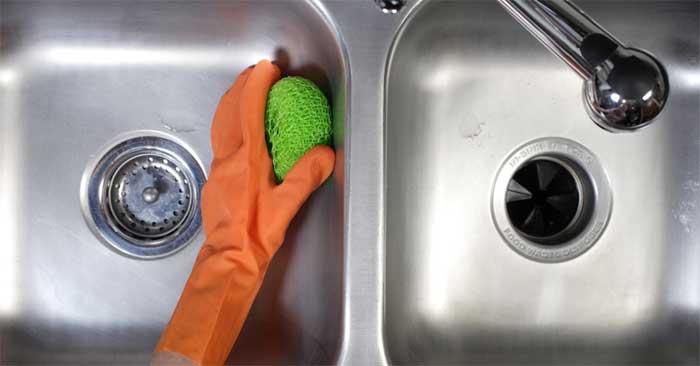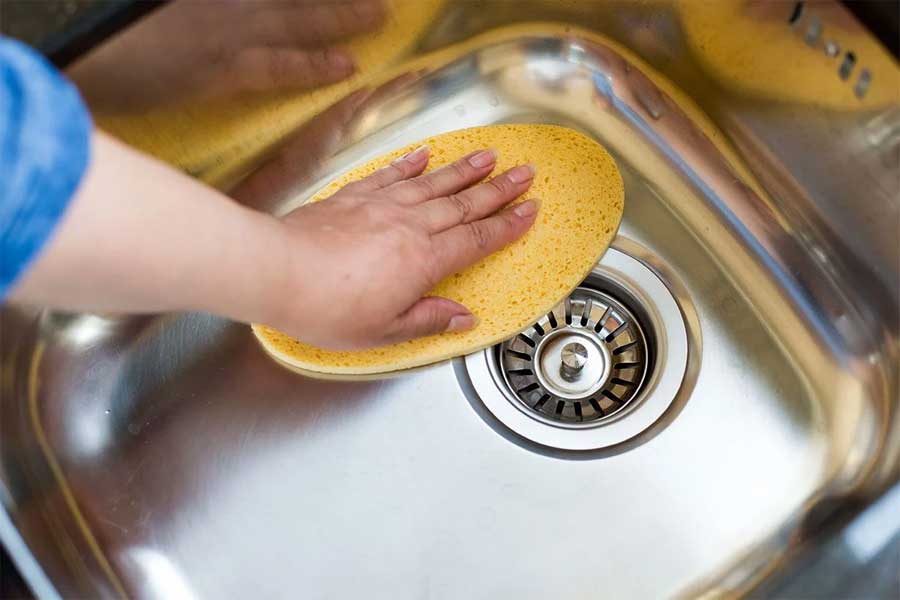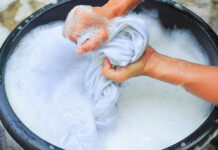Polishing Your Stainless Steel Sink: Easier Than You Think Below is a detailed guide on how to polish your stainless steel sink.

Sinks are among the most frequently used household fixtures, whether in the bathroom, kitchen, or laundry room. In reality, sinks can lose their shine and appear dull due to constant use, from washing dishes to handwashing and food preparation. However, it’s essential to learn how to polish stainless steel sinks to restore their desired appearance and keep them clean and odor-free.
Guide to Polishing Stainless Steel Sinks
Why Polish Stainless Steel Sinks?
The primary reason is to keep them in the best possible condition, as if they were newly purchased. Polishing helps smooth out scratches and microscopic grooves where dirt and minerals tend to accumulate. This is a quick way to ensure your bathroom or kitchen sink looks its best, even with frequent use.

Methods to Polish Stainless Steel Sinks
There are several methods to polish stainless steel sinks. Since this is a task you’ll need to perform regularly, choose the method that works best for you.
Using Flour
One of the simplest ways to polish a stainless steel sink is by using flour. Yes—flour is the key to achieving a spotless, shiny sink in your home. All you need is a soft cloth, flour, and a warm, soapy sponge.
Note that the sink should be cleaned before polishing. Therefore, remove any dishes and wipe the surface as usual. Once done, you can begin polishing.
To do this, apply a thick layer of flour to the sink until it forms a complete coating. Then, use the cloth to buff the flour until no stains remain.
Using Olive Oil or Mineral Oil
According to Corey Buescher, a virtual appliance repair expert at Frontdoor, this method is ideal for adding shine to stainless steel sinks. After cleaning and drying the sink, apply a small amount of olive oil or mineral oil to a soft cloth. Then, rub the oil into the sink following the grain until the surface is evenly shiny. Finally, wipe off any excess oil with a dry cloth.
Using Baking Soda and Vinegar
Buescher also recommends using baking soda and vinegar to polish stainless steel sinks. This method not only adds shine but also eliminates unpleasant odors.
“Start by sprinkling baking soda on a damp sink, then gently scrub with a soft sponge in the direction of the steel grain. Next, spray white vinegar over the baking soda, causing it to foam. Let it sit for 5–10 minutes.”
Afterward, rinse with warm water and thoroughly dry the sink with a soft cloth.
Using Specialized Polishing Products
After using these products, finish cleaning the stainless steel sink with a bit of oil to enhance the shine and wipe it off with a microfiber cloth. Then, apply a few drops of olive oil and gently rub with a clean cloth. Finally, buff any remaining solution with a dry cloth until the sink looks shiny.

How Often Should You Polish Your Stainless Steel Sink?
There’s no one-size-fits-all answer. It depends on how frequently you use the sink and when it needs thorough maintenance.
“As a general rule, if you live in a small household or cook infrequently, polish your sink once a month to maintain its shine and cleanliness.” “On the other hand, if you live in a larger household or cook regularly, polish your stainless steel sink every 1-2 weeks to prevent buildup, water spots, and stains.” – Buescher advises.
In addition to polishing, Buescher recommends using deodorizers like lemon or vinegar to keep your sink smelling fresh.







































